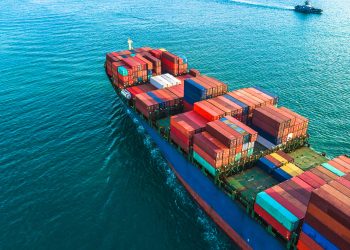Face uncertain demand and growing competition from larger vessels
 Container ships with capacities of 1,000-2,000 20-foot equivalent container units face uncertain cargo demand and growing competition from larger vessels, DVB Bank’s Research and Strategic Planning unit said.
Container ships with capacities of 1,000-2,000 20-foot equivalent container units face uncertain cargo demand and growing competition from larger vessels, DVB Bank’s Research and Strategic Planning unit said.
This sub-sector “will have difficulty in defending its market share in the uncertain economic environment from the increasing number of larger-capacity vessels that will be delivered in the market over the next couple of years,” DVB said in a report on the market outlook for small container ships. The report said the global fleet of “handy-size” ships with capacities of 1,000-2,000 TEUs totals 1,277 vessels with 1.8 million TEUs of total capacity.
Of these, 1,175 ships are on identifiable trade routes – 785 on intra-Asia or other regional routes, mostly 372 on north-south or secondary east-west services and 18 on primary east-west trade routes. These smaller ships face difficulty from mid-size vessels being pushed into regional trade routes.
“The accommodation of larger-capacity vessels such as super post-Panamax and post-Panamax vessels in the short-haul regional trades will continue to have a dampening effect on the handy-size sub-sector,” the report said.
About two-thirds of the handy-size container ship fleet is controlled by independent owners, mostly German interests. Current orders for 1,000-2,000-TEU ships total 143,000 TEUs of capacity, about 8 percent of the current handy-size container ship fleet.
Of the 29 container ships scrapped in the first nine months of the years, 13 were in the 1,000-2,000-TEU range. Additional scrappings could help bolster rated, the report said.
Seventy-three handy-size container ships are over 25 years old and are candidates for scrapping. “The sooner these vessels get phased out, the better it will be for this sub-sector,” the report said.
Source: The Journal of Commerce





























































